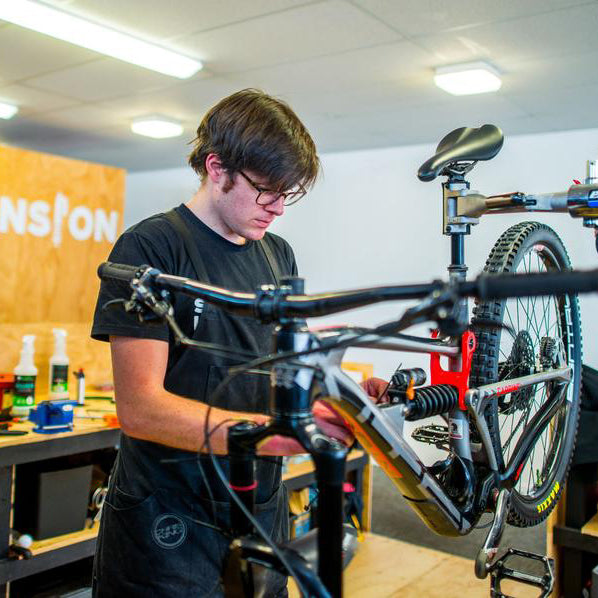Pul Serra is a local up and coming talent on the enduro scene. He’s won the CES series in the U18 division in 2015 and 2016. He rode for the Yeti-Fox enduro team in 2017 and Ibis Cycles in 2019. Paul will be racing select EWS, BME, and CES races for 2020.
"As a young rider, you really don’t know how to best set up your bike; what to optimize and when, how what you’re feeling differs from how fast you’re actually riding, if you’re supposed to change your suspensions depending on the course and what to change, etc. You don’t realize that what you might consider a good setup can actually be improved by so much if you have the right data. A better set up provides you the necessary confidence, speed, and control to ascend to the top.
“Good enough” is actually NOT “good enough” for the athletes like myself who are paying close attention to every single detail. That was my issue, I don’t like changing things. “No, I like it that way” or “that’s good” is always how I answered even though I wanted to figure out how to make my bike better. But how to do that properly, especially with suspension tuning? How do you learn from better riders, compare setups and try new things without real data to back-you up and guide your decisions on the spot without second-guessing?
Affordable and easy to use Data Acquisition tools were needed and it immediately paid off. We immediately saw that my suspension (fork and shock) was packing too much and decided to increase the rebound speed. Without data and limited experience as a young pro rider, it really wasn’t that obvious. Not only did we open the rebound, we actually opened it all the way, and then had a custom tune by DVO to accommodate my weight and riding style. I was honestly skeptical at first because it really feels weird maxing out your rebound clicks on both the fork and shock, and pushing further by asking DVO for quicker settings, but the data analytics proved the new rebound range led to a better bike tune.

Another breakthrough for us was the ability to look at quantify balance, how the fork and shock work together. Changing settings on your fork will impact the shock performance and vice-versa, but it’s hard to really figure out how much it impacts or what exactly changes in the behavior of the fork for example. If you don't know, you can make the wrong guess and then waste time trying to figure out what's actually better. Being able to look at front/rear at the same time allowed us to fine tune the bike much faster without guessing. And I have to say, the feeling of a properly tuned bike is unreal. Sure, I would have been able to get there at some point, but it probably would’ve taken a couple years of experience racing the EWS and hanging out with riders that have spent their career figuring out all this stuff. With the data, it only took a couple test sessions.
My times on tested trails are now faster without focusing on speed, hard sections became easier and more controlled, and new, quicker lines were uncovered because I had more time to react: everything was easier to control. And with data analytics, it was easy to replicate the exact same feeling on my other race bike (I have an Ibis HD4 and a Ripmo) even though everything is different (suspension travel, bike kinematic, wheel size, damper settings, tokens).
Since then, I have been able to play with different tunings and correlate my feeling and speed with data, allowing me to better understand how suspensions work and how to adjust depending on the terrain. I’m able to have more precise discussions with my mechanics and suspension manufacturer, which helps everyone involved: I know what I want sooner and the companies we’re working with don’t have to create endless prototypes, shooting darts in the dark."
Paul has been a great asset for us. You need feedback from all types of riders. Experienced world champs like Greg Minnaar already know what they want and their feedback is heavily biased based on experience shared by an elite circle. Younger riders like Paul made us realize that our product provided more than just a more efficient way to set up a bike, it provided an education. Paul’s suspension education led to increased confidence. He wasn’t second guessing his bike setup. This was not our goal when designing the system, but we are glad that our hard work has led to this result.



